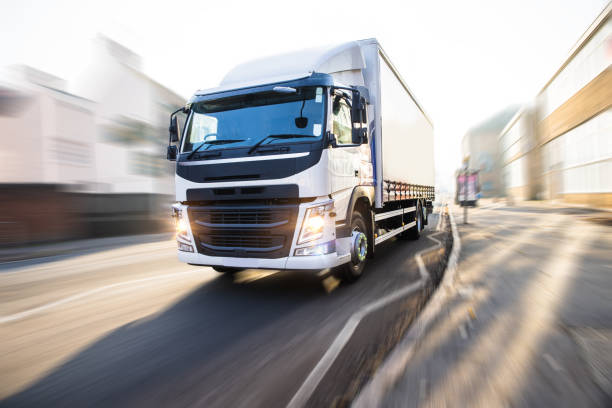When it comes to transporting heavy equipment, whether for a construction project, industrial job, or specialized machinery relocation, a well-planned move is essential. The logistics involved in moving heavy equipment can be complex and requires careful consideration of various factors. Working with an experienced heavy equipment moving company, like Eagle Rigging & Equipment Movers, ensures that your equipment is moved safely, efficiently, and on time.

If you're in Stamford, CT, or nearby areas and searching for a rigging company near me or equipment hauling near me, this guide will walk you through the steps to ensure your heavy equipment move goes smoothly and without stress.
1. Assess Your Equipment and Needs
The first step in planning a successful heavy equipment move is to assess the machinery you're transporting. Different types of equipment require different handling, and understanding the specific requirements of your machinery is essential.
Here’s what to consider:
Weight and Size: Measure the weight, height, width, and length of the equipment. These factors will influence the type of vehicle required for transport.
Fragility: Some machinery may be more delicate than others and could require additional care during transport, such as specialized padding or reinforced securing.
Operational Status: Determine whether your equipment is operational or non-operational. Non-operational equipment may need to be loaded differently, often requiring cranes or specialized rigging equipment.
2. Choose the Right Heavy Equipment Moving Company
Choosing the right heavy equipment moving company is critical to the success of your move. You’ll need a company with the necessary expertise, equipment, and safety standards to handle your machinery. Companies like Eagle Rigging & Equipment Movers have a proven track record of safely moving heavy equipment, offering services that are tailored to meet the unique needs of each project.
Key factors to consider when choosing a company include:
Experience: A company with years of experience in heavy equipment moving is likely to have the necessary skills and equipment to handle your job.
Specialized Equipment: Ensure that the company has the appropriate trucks, trailers, and rigging equipment for your specific type of machinery.
Insurance and Licensing: Verify that the company has the proper insurance and licenses to legally transport heavy equipment in your area.
Safety Protocols: A reputable company will follow industry safety standards, ensuring the equipment and all personnel remain safe throughout the transport process.
3. Obtain Necessary Permits and Approvals
When transporting heavy or oversized equipment, especially in urban areas like Stamford, obtaining the necessary permits is a crucial step. Different states and municipalities have specific regulations regarding road usage, especially when it comes to transporting large machinery.
A reliable rigging company near me, such as Eagle Rigging & Equipment Movers, will assist with acquiring the necessary permits for:
Oversized load permits: Required for equipment that exceeds weight or size limits.
Route restrictions: Certain roads, bridges, or areas may be restricted for oversized loads, and a professional moving company will help you plan around these restrictions.
Escort vehicles: In some cases, the company may need to arrange for escort vehicles to clear the way for oversized loads.
By having a professional handle the permits and approvals, you avoid unnecessary delays and ensure that your move stays within the legal requirements.
4. Plan the Route and Timing
Route planning is an essential aspect of moving heavy equipment. A proper route will ensure that your machinery is delivered safely and on time, without unnecessary detours or delays. Here’s what to keep in mind:
Road Conditions: Heavy equipment requires sturdy and smooth roads for safe transport. A moving company will plan routes that avoid rough roads, low-clearance bridges, or narrow lanes.
Timing: Plan for traffic conditions, especially if your equipment is being transported during peak hours. Avoiding congested areas and ensuring that you can move your equipment during off-peak hours will help reduce delays.
Weather: Weather conditions, such as rain or snow, can impact transport. Make sure to choose a moving day with favorable weather, or be prepared to adjust plans as needed.
Safety: Consider the safety of pedestrians, other vehicles, and construction workers in the area. Proper route planning helps mitigate risks during the move.
A company like Eagle Rigging & Equipment Movers will offer expert advice on the best routes to take and will coordinate with local authorities to ensure a smooth and safe journey for your heavy equipment.
5. Secure the Equipment Properly
Securing your heavy equipment properly is one of the most important aspects of the transport process. Without proper load securing, there’s a risk of equipment damage, accidents, and delays. Some of the securing methods used by professional heavy equipment moving companies include:
Straps and Chains: These are used to tie down the equipment securely to the trailer. The right type and strength of straps are essential for preventing shifting during transport.
Blockers and Chocks: These are used to prevent the equipment from moving on the trailer and to stabilize it during transit.
Cradles and Ramps: Some equipment may need cradles or ramps to ensure that it is loaded and unloaded smoothly and safely.
Make sure that the moving company uses proper securing techniques and equipment to avoid accidents and damage during transport.
6. Communicate with All Parties Involved
Clear communication between all parties involved is key to ensuring a smooth and hassle-free move. This includes:
The moving company: Discuss the schedule, routes, and any potential challenges before the move.
Local authorities: If permits or escorts are needed, communicate with the relevant authorities to ensure everything is in order.
On-site personnel: If the equipment is being picked up or delivered to a construction site, ensure that all site managers or personnel are informed about the move. This ensures that the equipment is unloaded and positioned correctly once it arrives.
Eagle Rigging & Equipment Movers prides itself on its transparent and clear communication, keeping clients updated every step of the way.
7. Prepare for Unloading and Installation
The move doesn’t end when the equipment reaches its destination. Proper unloading is just as important as loading. Ensure that the destination site is prepared for the arrival of the machinery by:
Ensuring there’s adequate space for unloading and maneuvering.
Arranging for cranes or other equipment if needed to unload the machinery safely.
Having experienced rigging professionals on hand to supervise the unloading and installation process.
Final Thoughts
Moving heavy equipment requires careful planning, expertise, and attention to detail. By choosing a reliable heavy equipment moving company like Eagle Rigging & Equipment Movers, you can ensure that your equipment is transported safely, on time, and without unnecessary stress.
By assessing your needs, obtaining the proper permits, planning the route, securing the equipment, and maintaining clear communication, you can make your heavy equipment move as smooth and hassle-free as possible. Whether you're looking for a rigging company near me or need equipment hauling near me, professional movers are here to ensure a successful and efficient transportation experience.
Eagle Rigging & Equipment Movers
47 Larkin St, Stamford, CT 06907, United States
14752847490
https://www.eaglerigging.com/heavyequipmentmovers-stamfordct
 Brandy Then & Now!
Brandy Then & Now! Nancy Kerrigan Then & Now!
Nancy Kerrigan Then & Now! Justine Bateman Then & Now!
Justine Bateman Then & Now! Dawn Wells Then & Now!
Dawn Wells Then & Now! Peter Billingsley Then & Now!
Peter Billingsley Then & Now!